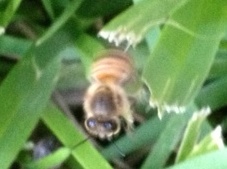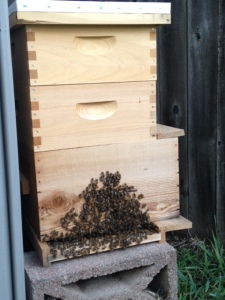Back in May, I became the proud co-parent of a few hundred or so bees. (By now, we probably have a few thousand.)
Bees. Yes, beeeeeesss.
And since then, we’ve had a lot of people ask exactly how to get started in this whole thing, so I thought I’d share what I know. Keep in mind though – we’re still learning as well!
First of all, before you do anything else – find a local mentor. Yes, there are tons of videos on YouTube, and those will be helpful. But there’s nothing that can substitute for having someone you can call up when your bees start doing something new or you’re not sure how to use a piece of equipment.
Carl also went to Beekeeping 101 class at Round Rock Honey, which offers classes around Texas, California, and in Madison, Wisconsin; there are other similar schools around the country. You can also find local beekeeping groups in many areas that have frequent meetups and online discussion forums. (Click “continue reading” to see more!)

Then, there’s the matter of equipment. Because there are a lot of nasty parasites and diseases that afflict honeybees, it’s generally best never to buy used equipment. There’s just no way to know whether the previous owner might be getting rid of his hives because of American Foulbrood or an infestation of varroa mites, and it’s not a risk you want to take. We’ve gotten our equipment from three places: Brushy Mountain Bee Farm, Round Rock Honey, and just building it ourselves.
Third, where and how to get your bees. The answers here vary a lot, which is why step one was to find a local mentor. We got ours from BeeWeaver Apiaries in Dripping Springs, Texas, and we ordered a “nuc” or “nuclear hive” which contains 3-4 frames of worker bees and one segregated queen. This allowed us to easily transfer the frames directly into our hive, and the queen started laying brood immediately. You can also order a “package” of bees, but those can take a bit longer to get going.
All in all though, beekeeping is a fairly easy hobby to get started in, and the bees largely take care of themselves once established. We’ll be doing our first honey harvest in a couple weeks, so check back for more info on our first yield soon!

